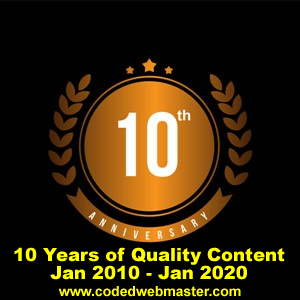 How do you create content that will entice your target audience to click your link, visit your website, and buy your product? Why is understanding search intent essential to your overall SEO strategy?
How do you create content that will entice your target audience to click your link, visit your website, and buy your product? Why is understanding search intent essential to your overall SEO strategy?
Creating content that is unique, useful and relevant is just part of the job. You need to optimize your article, blog post, or video to make sure it is delivered to the right audience, preferably at the perfect time (when they are looking for the solutions you offer).
Without optimization, your content–no matter how well-made–may remain unknown and unconsumed, which is a total waste of resources.
What is search engine optimization (SEO) and why does it matter?
Digital marketing expert Neil Patel defines SEO as “the process of optimizing your online content so that a search engine would show it as a top result for searches of certain keywords.”
SEO is the key that will place the link to your content or website among the top results on Google or any other search engine, when a user searches for relevant keywords.
SEO involves a plethora of topics such as keyword research, keyword mapping, content marketing, link building, etc. This guide will focus on an important SEO concept: search intent.
What is search intent?
Search intent or query intent is the “why” behind every search a user enters into a search engine. It is the user’s purpose for performing a search. Google wants to give users the best results or the closest answer to their queries, using search intent.
Google always aims to deliver results that match the 4 C’s of search intent: content style, content type, content format. and content angle.
- Content style: Is the user looking for images, videos, or text-based content?
- Content type: Is the user interested in a blog post, a product, a category, or a certain landing page?
- Content format: Is the user on the lookout for news articles, tutorials, or list posts?
- Content angle: Is the user searching for content made for beginners or one with an academic angle?
What is the importance of search intent?
Google crawls the Internet and indexes the content it finds. It crawls by downloading and re-downloading webpages. Google regularly re-crawls known pages with recently added links to discover new content. The downloaded pages are then passed on to the parser.
The parser breaks apart components of a content such as links and sends the extracted URLs to the scheduler and the data for indexing. Indexing involves adding information to some sort of digital library.
When users enter a search query into Google–or any search engine, for that matter–they find matching results and rank them by relevance. What makes Google more powerful than others is that it uses language models that decipher the intent behind the searches, no matter how obscure or incorrect the queries are. Its algorithm provides the most relevant results out of all the search engines.
Search intent is one of the key factors that Google uses to find and rank relevant content.
What are the different types of search queries?
Google classified search intent into three main groups:
Informational search intent
The user aims to know or to do something. People doing information searches want to know about a certain business or a brand, a celebrity, a political concept, or just about anything under the sun. They may also intend to subscribe to a digital magazine or to buy a product.
Navigational search intent
The user wants to go to a specific place such as a physical store or a particular online location. A navigational search typically includes the keywords “near me”. In some instances, the user knows the website to visit but is unsure of the correct URL. Such search is navigational.
Transnational search intent
The user intends to buy or purchase something online. A transactional search typically includes keywords, like “buy”, “price”, or “for sale”. Google, as powerful as it is, commonly returns transactional content even without keywords that suggest a buying intent. The results may show both transactional and informational content to cover everything a user may need.
How do you optimize for search intent?
The starting point of SEO is keyword research. This stage of the SEO process involves the discovery and collection of keywords, terms and phrases that users type in search engines, with the ultimate goal of optimizing content around those keywords.
To optimize for search intent, you are not only discovering keywords but also modifiers that will give clues on what a user intends. Does the user want to know or do something; go to a physical or a digital location, or make a purchase?
Here are some examples of search intent modifiers:
Informational: What, Who, Where, Why, How, Tips, Guide
Navigational: Brand name, Product or service name
Transactional: Buy, Purchase, Cheap, Sale, Price
These modifiers help the content creator or the marketer, and the search engine assumes the intent behind the search. These are only guides because at this point, there is no accurate way of knowing the exact purpose behind a user query. You would need an in-depth understanding of the language people use and their browsing behavior, both of which change over time.
Another way to determine searcher intent is to manually perform a search and analyze the generated results. If Google shows how-to articles or tips, you may conclude that the search intent is informational. It is also possible that a query has multiple search intent (informational and transactional, etc.).





